Don't wanna be here? Send us removal request.
Text
Comfort Food
It has been a long time since I last wrote about anything. But here's a post about my recent visit to India and the food there.
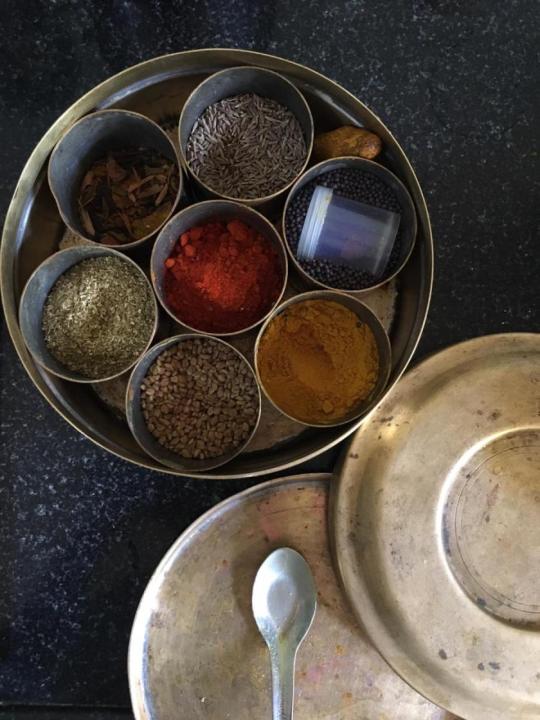

Comfort food for me, is any thing that transport me to my childhood memories and reminds me of home and my family.
I went back home during the holidays and it was a really short trip this time. I had planned to cook and eat all the dishes that I used to make with my mother and grandmother as a kid.
My first stop from the airport was the vegetable vendor near my house. I brought home all…
View On WordPress
0 notes
Text
International Sushi Day
twitter.com/incplates/status/1008898974479048704
View On WordPress
0 notes
Text
Cheese makers’ day 🧀
twitter.com/incplates/status/1008905745708924928
View On WordPress
0 notes
Text
International Sushi Day
twitter.com/incplates/status/1008898974479048704
View On WordPress
0 notes
Text
#cheesemakersday!!!
twitter.com/incplates/status/1008905745708924928
View On WordPress
0 notes
Text
Discussion 12: Contemporary photography
– Alterations are not allowed in press photography, but they are one of the tools used in contemporary art photography? Why?
Alterations are used to change the reality according to what the photographer wishes to show the audience. Therefore, in press photography, alterations are not allowed. Press photography is supposed to bring the truth to the public. It is against the code of ethics of photojournalists to alter their images.
On the other hand, contemporary art photographers use their imagination to create their photographs. There is no truth or reality to convey in art photography. Thus, alterations are one of the tools used in contemporary art photography.
– Compare photographs of Sommer, Adams and Klett versus Parkeharrison, Muniz and Crewdson. What happened to the photography? Is this its future?
Sommer: Frederick Sommer was a realist photographer too. He liked to click the present as best as he could. He liked depicting high contrast colour and lighting in his photographs. (Frederick and Frances Sommer Foundation, 2004-2017)
Adams: Robert Adams captured the transition of the world around him from the 1970s to early 2000s. He did not manipulate his photographs and conveyed the true picture of his surroundings. His photographs are held by various prestigious art galleries worldwide. (Fraenkel Gallery, 2018)
Klett: Mark Klett is known for his rephotography approach. He likes to observe the effect of time on the same place or thing by clicking the same subject over many years, and from the same vantage point. He has recreated many famous photographs from the 19th century. (Etherton Gallery, 2018)
Sommer
Adams
Klett
Versus
Parkeharrison
Muniz
Crewdson
Parkeharrison: Robert and Shana Parkeharrison are clicking images which are related to the modern life, the failed science and technology which is affecting everyone and an artistic interpretation of modern issues. Their approach is more fictitious, but one that stems from reality. (Robert and Shana Parkeherrison, 2018)
Muniz: Vik Muniz creates photographs from the people’s perspective. He shows the world all that is considered regular and artistically makes it very meaningful. (Vik Muniz, 2018)
Crewdson: Gregory Crewdson uses the real world to create pictures which look dreamy, somewhat like in the movies. It is somewhere in-between fiction and reality. This is because the characters and scenes are fictitious, while the surroundings are real. This can be called manipulation or altering because he stages his photographs according to his imagination. It is not the true moment which he captured. (Gagosian, 2018)
The new reality or fiction? Discussion 12: Contemporary photography - Alterations are not allowed in press photography, but they are one of the tools used in contemporary art photography?
0 notes
Text
The impact of digital technology on photography
The impact of digital technology on photography
Discussion 11
– How has digital technology changed the role of photography in the society?
DIgital photography has made it easy to create photographs, share photographs and manipulate photographs as well. Before the introduction of digital photography, photographers would spend hours in the darkroom to edit their photographs to their content. But digital technology has completely changed that.…
View On WordPress
0 notes
Text
Module 10: Kertesz and Cartier-Bresson versus Smith and Salgado
Compare the work of Andre Kertesz and Henri Cartier-Bresson versus the work of Eugene Smith and Sebastião Salgado. They are four photojournalists with different approaches.
– What are the main differences and similarities?
– What’s the better journalistic approach?
Andre Kertesz
Born in Budapest, Hungary, in 1894, Andre Kertesz worked as a clerk at the Budapest stock exchange in 1912 when he bought his first camera. Two years later, he was sent off to World War I, when he was 20 years old and picture that miserable and hard life and shared with the world.
It was in 1925 when he moved to Paris because of a lack of opportunities and started to work as a freelance photographer. (Albers, P. 2015) Kertesz is known for his the visual lyricism and humanism that characterized his practice. His camera angles are different, with height and depth. His photos are mostly in an urban scenario.
“I always had a small camera with me on the front line, where I made candid, informal photographs, unlike the official photographers for the War Department.” (Andre Kertesz) (Course Notes Module 9).
Henri Cartier- Bresson
Henri Cartier- Bresson was born on August 22nd in Chanteloup, Seine-et-Marne. In 1931 he saw a photograph by Martin Munkácsi in the arts magazine Arts et Métiers Graphiques and decides to focus on photography.
He took a series of photographic portraits of writers and artists in 1944 for Editions Braun (Henri Matisse, Pablo Picasso, Georges Braque, Pierre Bonnard, Paul Claudel, Georges Rouault).
In 1947 he held a photo exhibition at the Museum of Modern Art in New York. Creates the cooperative agency Magnum Photos with Robert Capa, David Seymour (Chim), William Vandivert, and George Rodger. From 1948 to 1950, he spent three years in the Far East: in India for the death of Gandhi, in China for the last six months of the Kuomintang and the first six months of the People’s Republic, and in Indonesia for its independence. His photographs are published all over the world.
In 1954 he is the first photographer allowed in the USSR since the beginning of the Cold War.
Later he travelled to China, Mexico, India, France, the USA and USSR from 1955 to 1973.
In 1974 he decided to focus again on drawing and resigned from Magnum Photos. (HCB foundation )
Similarities with Andre Kertesz:
They both believed that clicking the decisive moment is important. They did not care about the technical aspects of photography. They both did not think of photography as a away of reporting things.
(Lessons W Eugene Smith taught me about photography, 2013)
The Decisive Moment: “To me, photography is the simultaneous recognition, in a fraction of a second, of the significance of an event as well as of a precise organization of forms which give that event its proper expression” (Salgado, 1990, p.147).
SPAIN. Madrid. 1933.
SPAIN. Andalucia. Seville. 1933.
GREAT BRITAIN. London. Coronation of King George VI. 12 May 1937. “People had waited all night in Trafalgar Square in order not to miss any part of the coronation ceremony of George VI. Some slept on benches and others on newspapers. The next morning, one who was wearier than the others, had not yet wakened to see the ceremony for which he had kept such a late vigil.”
Eugene Smith
American photojournalist
Worked extensively and popularised photo essay
He was a humanitarian photographer
He wanted his photographs to convey an emotional resonance with his viewers.
He also wanted to change people’s view about war. He was ready to risk his life for clicking a photograph if people would realise the negative side of war and stop wars in the futur
His largest photo essay is of 1975 Minamata village in Japan. The entire fishing villages faced huge troubles due to mercury dumping be a chemical company.(Howard Greenberg Gallery, 2018)
Some think that Eugene Smith was very hard on himself and sacrificed his health to concentrate on his career. He said that photography is everything for him and rest of the things do not matter that much. This lead to him passing away at the early age of 59 due to a heart stroke. He left behind $18 in his bank account and tonnes of photographs which continue to inspire photographers to this day. (W. Eugene Smith Memorial Fund, 2004-2017)
JAPAN. Minamata. Iwazo FUNABA’s crippled hands. She is a victim of the Minamata disease. 1971.
JAPAN. Minamata. Takak ISAYAMA, a 12 year old fetal (congenital) victim of the Minamata Disease, with her mother. 1971.
JAPAN. Minamata. Iwazo FUNABA’s crippled hand, a victim of the disease. 1971.
Sebastiao Salgado
Sebastiao Salgado was born on February 8, 1944, in Aimorés, Brazil. A region with no access to a good education, which made him travel about 180 kilometres until Vitoria, for schooling. Today he is an award-winning photographer known by his arresting documentation of communities around the world.
Salgado has earned fame for his stark photos of people coping with the effects of poverty, famine, industrialization and political oppression. He has received numerous awards for his photojournalism and has twice been named Photographer of the Year by the International Center of Photography. He and his wife founded the photographic agency, Amazonas Images and co-founded the environmental education centre, Institutio Terra that works on the restoration of Brazilian rainforests.
– What’s the better journalistic approach?
It is true that every photographer has his own journey and all of them are inspiring, creative and good examples of photojournalism photographers. They helped to tell the true story and they did it very well. Despite all that, I think that Andre Kertesz and Henri Cartier-Bresson’s way of working is better. They follow the code of ethics in journalism, and their pictures are exactly what the real moment was, without any manipulation.
References:
Albers, P. (2015, March 27). André Kertész. Retrieved April 1, 2018, from https://www.britannica.com/biography/Andre-Kertesz
BIOGRAPHY (2014, April 02). Sebastiao Salgado. Retrieved April 03, 2018, from https://www.biography.com/people/sebastião-salgado-40046\
Course Notes Module 10. “Presenting the moment: Eugene Smith and Sebastiao Salgado” (2018).
Course Notes Module 9. “Capturing the moment: Kertesz and Cartier-Bresson” (2018).
Getty Museum. (n.d.). André Kertész. Retrieved April 1, 2018, from http://www.getty.edu/art/collection/artists/1847/andr-kertsz-american-born-hungary-1894-1985/
HCB foundation . (n.d.). Biography. Retrieved from henricartierbresson HCB foundation : http://www.henricartierbresson.org/en/hcb/biography/
Howard Greenberg Gallery. (2018). W Eugene Smith. Retrieved from Howard Greenberg Gallery: http://www.howardgreenberg.com/artists/w-eugene-smith
Kim. E. (2015, March 02). 5 Lessons Sebastião Salgado Has Taught Me About Street Photography Retrieved April 1, 2018, from http://erickimphotography.com/blog/2015/03/02/5-lessons-sebastiao-salgado-has-taught-me-about-street-photography/
Lessons W Eugene Smith taught me about photography. (2013, May 13). Retrieved from Eric Kim Photography: http://erickimphotography.com/blog/2013/05/13/7-lessons-w-eugene-smith-has-taught-me-about-street-photography/
Magnum Photos. (2014). Henri Cartier- Bresson: Portfolio. Retrieved from Magnum Photos: https://pro.magnumphotos.com/C.aspx?VP3=SearchResult&ALID=2K7O3R14TE52#/SearchResult&ALID=2K7O3R14TE52&VBID=2K1HZS2RBPID4&POPUPIID=2S5RYD1EZGYV&POPUPPN=50
Magnum Photos. (2014). Portfolio- Japan.1971.Minamata vs. the Chisso Corporation W. Eugene Smith. Retrieved from Magnum Photos : https://pro.magnumphotos.com/C.aspx?VP3=SearchResult&ALID=2TYRYDDWZXTR#/SearchResult&ALID=2TYRYDDWZXTR&VBID=2K1HZS2O2M5AO&POPUPIID=2S5RYDY592XK&POPUPPN=17
Salgado, S. (1990). In Galeano E. H., Ritchin F. and San Francisco Museum of Modern Art. (Eds.), An uncertain grace. New York, N.Y.: Aperture Foundation.
The Art of Photography. (2015, May 14). Sebastião Salgado Photographer (Brazilian). Retrieved April 1, 2018, from http://theartofphotography.tv/photographers/salgado/
W. Eugene Smith Memorial Fund. (2004-2017). W. Eugene Smith legacy. Retrieved from W. Eugene Smith Memorial Fund: http://smithfund.org/smith-legacy
Capturing the moment Module 10: Kertesz and Cartier-Bresson versus Smith and Salgado Compare the work of Andre Kertesz and Henri Cartier-Bresson versus the work of Eugene Smith and Sebastião Salgado.
0 notes
Text
Module 10: Kertesz and Cartier-Bresson versus Smith and Salgado
Compare the work of Andre Kertesz and Henri Cartier-Bresson versus the work of Eugene Smith and Sebastião Salgado. They are four photojournalists with different approaches.
– What are the main differences and similarities?
– What’s the better journalistic approach?
Similarities Differences Andre Kertesz
&
Henri Cartier-Bresson
Black and White photografies.
Humanistic photographer, photo essay
They did not accept changes in their photos.
They want to tell a story with their photos.
They both believed that the photographer needs to be invisible to the subject for capturing the decisive moment.
Kertesz influenced art along with journalism
Bresson pioneered street photography, specialises in candid photography
Eugene Smith
&
Sebastiao Salgado
Black and White photografies.
Their photos are focused on sad subjects and facts, evoking emotions.
They want to tell a story with their photos.
They do not like to make changes in their pictures using the dark room.
Smith developed photo essay into a sophisticated visual form
Salgado does not believe that he is a photojournalist, but a social photographer
Andre Kertesz
Born in Budapest, Hungary, in 1894, Andre Kertesz worked as a clerk at the Budapest stock exchange in 1912 when he bought his first camera. Two years later, he was sent off to World War I, when he was 20 years old and picture that miserable and hard life and shared with the world.
It was in 1925 when he moved to Paris because of a lack of opportunities and started to work as a freelance photographer. (Albers, P. 2015)
In 1928 he participated in the First Independent Salon of Photography, where his pictures were notably for his blend of a romantic sensibility with modernist attitude. He was cited by critics and mentioned as a proof that photography could be considered a fine art.
Kertesz published three books with his photographs. Immigrated to the USA in 1936 and settled in New York, where he started to work for House and Garden magazine as a professional photographer. At the age of 60, he retired and started to focus on more personal topics that he used to enjoy when an amateur photographer.
Kertesz is known for his the visual lyricism and humanism that characterized his practice. His camera angles are different, with height and depth. His photos are mostly in an urban scenario.
“I always had a small camera with me on the front line, where I made candid, informal photographs, unlike the official photographers for the War Department. They always came with a huge camera on a tripod after the battle was over to make a scenic photograph that would show the destruction” (Andre Kertesz) (Course Notes Module 9).
Henri Cartier- Bresson
Henri Cartier- Bresson was born on August 22nd in Chanteloup, Seine-et-Marne. He studied at the Lycée Condorcet, Paris. He studied painting under André Lhote. In 1926 he took his first photographs. In 1931 he saw a photograph by Martin Munkácsi in the arts magazine Arts et Métiers Graphiques and decides to focus on photography.
In 1932 he bought his first Leica and travelled across Europe with his friends Leonor Fini and Pieyre de Mandiargues. First publications in Voilà and Photographies.
He had his first exhibition at the Julien Levy Gallery, New York in 1933. His photographs are subsequently shown at the Ateneo Club in Madrid.
From 1935-39 he worked for cinemas before moving to war photography in 1940. He joined the “Film and Photography” unit of the Third Army in 1940. Taken prisoner by the Germans on June 23rd. After two failed attempts successfully escaped on his third attempt in February 1943. He worked for MNPGD, a secret organization created to help prisoners and escapees.
He took a series of photographic portraits of writers and artists in 1944 for Editions Braun (Henri Matisse, Pablo Picasso, Georges Braque, Pierre Bonnard, Paul Claudel, Georges Rouault).
In 1947 he held a photo exhibition at the Museum of Modern Art in New York. Creates the cooperative agency Magnum Photos with Robert Capa, David Seymour (Chim), William Vandivert, and George Rodger. From 1948 to 1950, he spent three years in the Far East: in India for the death of Gandhi, in China for the last six months of the Kuomintang and the first six months of the People’s Republic, and in Indonesia for its independence. His photographs are published all over the world.
1952: His first book, Images à la Sauvette, with its cover by Matisse, is published by Tériade. The first exhibition in England, Photographs by Henri Cartier-Bresson at the Institute of Contemporary Arts.
In 1954 he is the first photographer allowed in the USSR since the beginning of the Cold War.
Later he travelled to China, Mexico, India, France, the USA and USSR from 1955 to 1973.
In 1974 he decided to focus again on drawing and resigned from Magnum Photos. (HCB foundation )
He believed that the photographer needs to be invisible to the subject for capturing the decisive moment. He said, “life is once forever” by which he meant that once the decisive moment has passed, it can never again be repeated. Every minute occurs once and after it is over you can do nothing about it.
He had said that staging your subjects to get a perfect picture is unethical. He thought that was the basic rule of candid photography. But many of his own photographs were posed. Henri Cartier- Bresson admitted that capturing one image to depict the event is very difficult. Therefore, he practised photo essay to capture the entire event from various perspectives.
Similarities with Andre Kertesz:
They both believed that clicking the decisive moment is important. They did not care about the technical aspects of photography. They both did not think of photography as a way of reporting things.
(Lessons W Eugene Smith taught me about photography, 2013)
The Decisive Moment: “To me, photography is the simultaneous recognition, in a fraction of a second, of the significance of an event as well as of a precise organization of forms which give that event its proper expression” (Salgado, 1990, p.147).
In 2000 he set up the Henri Cartier-Bresson Foundation with his wife, Martine Franck, and daughter, Mélanie. The idea is to provide a permanent home for his collected works as well as an exhibition space open to other artists. And in 2002, The Henri Cartier-Bresson Foundation is recognized as being of public interest by the French State.
Henri Cartier-Bresson passed away in Montjustin, Provence on August 3rd, 2004. (HCB foundation )

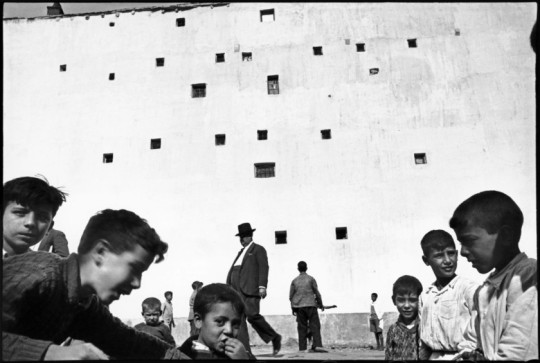

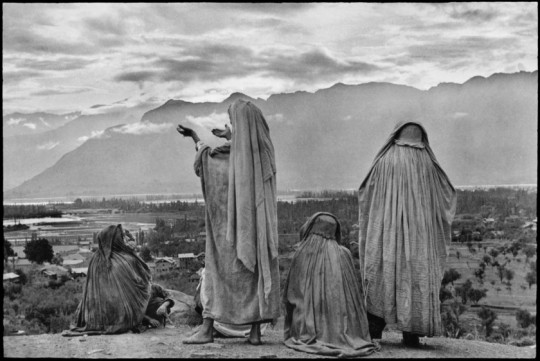
(Magnum Photos, 2014)
Eugene Smith
American photojournalist
Worked extensively and popularised photo essay
He was a humanitarian photographer
He always believed in having a purpose for clicking a photograph. This shows the focus that he had while photographing.
He wanted his photographs to convey an emotional resonance with his viewers.
He also wanted to change people’s view about war. He was ready to risk his life for clicking a photograph if people would realise the negative side of war and stop wars in the future.
He said that if a photographer does not know the answer to ‘why am I clicking this?’, then they should stop photographing.
Eugene Smith also tried to capture the reality behind the war. He photographed the lives of people who were a part of the war. This shows his humanitarian approach to photography.
Eugene Smith was considered by many to be aggressive in person but he always cared deeply for his subjects. He was always respectful to them. And if he found injustice being done to anyone, then he would like to photograph it and bring that topic to light.
Unlike Henri Cartier-Bresson, Eugene Smith thought that it was alright to stage photographs. If staging added authenticity of place to an image, then it could be used.
He used to print his photographs a number of times till he thought that the photograph looked fine to him. He always wanted to control the final image in post-processing. While Henri Cartier-Bresson did not post-process his images. He would get a trusted printer to do his work. He was more interested in photography.
He was never concerned about his finances, fame and recognition. He just wanted to do his job as best as he could.
(Lessons W Eugene Smith taught me about photography, 2013)
He also worked as a photojournalist war correspondent for Flying Magazine from 1943-44 and one year after that for Life magazine. He followed the American offensive against Japan when he got severely injured. He had to undergo surgeries for the next two years.
After recovering, he focused on making a number of photo essays that went on to become very popular.
His largest photo essay is of 1975 Minamata village in Japan. The entire fishing villages faced huge troubles due to mercury dumping be a chemical company.
(Howard Greenberg Gallery, 2018)
JAPAN. Minamata. Iwazo FUNABA’s crippled hand, a victim of the disease. 1971.
JAPAN. Minamata. Iwazo FUNABA’s crippled hands. She is a victim of the Minamata disease. 1971.
JAPAN. Minamata. Takak ISAYAMA, a 12 year old fetal (congenital) victim of the Minamata Disease, with her mother. 1971.
(Magnum Photos, 2014)
Some think that Eugene Smith was very hard on himself and sacrificed his health to concentrate on his career. He said that photography is everything for him and rest of the things do not matter that much. This lead to him passing away at the early age of 59 due to a heart stroke. He left behind $18 in his bank account and tonnes of photographs which continue to inspire photographers to this day.
(W. Eugene Smith Memorial Fund, 2004-2017)
4. Sebastiao Salgado
Sebastiao Salgado was born on February 8, 1944, in Aimorés, Brazil. A region with no access to a good education, which made him travel about 180 kilometres until Vitoria, for schooling. Salgado attended one of the best universities in Sao Paulo and got his MA in Economy. He also got married to Lelia Wanick and had two children with her. Today he is an award-winning photographer known by his arresting documentation of communities around the world.
Salgado has a monochromatic style, he believes that it forces his viewers to focus on the pictures’ topic, other than colours. His style combines complexity with a high sense of drama, and his work is dedicated to awareness of conditions of both wildlife and humans. Salgado’s photography has often focused on the effects of hardship, poverty and oppression on people of various cultures, and with the effects of industrialization on the natural landscape. Inspired by the photojournalism of Lewis Hine, W. Eugene Smith and Walker Evans, Salgado has tackled subjects like famine, poverty and social inequality in black-and-white photos that are unsparing yet often beautiful.
Salgado has earned fame for his stark photos of people coping with the effects of poverty, famine, industrialization and political oppression. He has received numerous awards for his photojournalism and has twice been named Photographer of the Year by the International Center of Photography. He and his wife founded the photographic agency, Amazonas Images and co-founded the environmental education centre, Institutio Terra that works on the restoration of Brazilian rainforests.
“My pictures gave me 10 times more pleasure than the reports I was working on. To be a photographer was, for me, an incredible way to express myself, an incredible way to the see the world from another point.” (Sebastiao Salgado)
– What’s the better journalistic approach?
It is true that the path of these four artists was not easy and all of them are inspiring, creative and good examples of photojournalism photographers. They wanted to tell people a story and they did it very well. Despite all that, we came up to a conclusion that Andre Kertesz and Henri Cartier-Bresson’s way of working is better. They follow the code of ethics in journalism, and their pictures are exactly what the real moment was, no changes, the real life and the real fact.
References:
Albers, P. (2015, March 27). André Kertész. Retrieved April 1, 2018, from https://www.britannica.com/biography/Andre-Kertesz
BIOGRAPHY (2014, April 02). Sebastiao Salgado. Retrieved April 03, 2018, from https://www.biography.com/people/sebastião-salgado-40046\
Course Notes Module 10. “Presenting the moment: Eugene Smith and Sebastiao Salgado” (2018).
Course Notes Module 9. “Capturing the moment: Kertesz and Cartier-Bresson” (2018).
Getty Museum. (n.d.). André Kertész. Retrieved April 1, 2018, from http://www.getty.edu/art/collection/artists/1847/andr-kertsz-american-born-hungary-1894-1985/
HCB foundation . (n.d.). Biography. Retrieved from henricartierbresson HCB foundation : http://www.henricartierbresson.org/en/hcb/biography/
Howard Greenberg Gallery. (2018). W Eugene Smith. Retrieved from Howard Greenberg Gallery: http://www.howardgreenberg.com/artists/w-eugene-smith
Kim. E. (2015, March 02). 5 Lessons Sebastião Salgado Has Taught Me About Street Photography Retrieved April 1, 2018, from http://erickimphotography.com/blog/2015/03/02/5-lessons-sebastiao-salgado-has-taught-me-about-street-photography/
Lessons W Eugene Smith taught me about photography. (2013, May 13). Retrieved from Eric Kim Photography: http://erickimphotography.com/blog/2013/05/13/7-lessons-w-eugene-smith-has-taught-me-about-street-photography/
Magnum Photos. (2014). Henri Cartier- Bresson: Portfolio. Retrieved from Magnum Photos: https://pro.magnumphotos.com/C.aspx?VP3=SearchResult&ALID=2K7O3R14TE52#/SearchResult&ALID=2K7O3R14TE52&VBID=2K1HZS2RBPID4&POPUPIID=2S5RYD1EZGYV&POPUPPN=50
Magnum Photos. (2014). Portfolio- Japan.1971.Minamata vs. the Chisso Corporation W. Eugene Smith. Retrieved from Magnum Photos : https://pro.magnumphotos.com/C.aspx?VP3=SearchResult&ALID=2TYRYDDWZXTR#/SearchResult&ALID=2TYRYDDWZXTR&VBID=2K1HZS2O2M5AO&POPUPIID=2S5RYDY592XK&POPUPPN=17
Salgado, S. (1990). In Galeano E. H., Ritchin F. and San Francisco Museum of Modern Art. (Eds.), An uncertain grace. New York, N.Y.: Aperture Foundation.
The Art of Photography. (2015, May 14). Sebastião Salgado Photographer (Brazilian). Retrieved April 1, 2018, from http://theartofphotography.tv/photographers/salgado/
W. Eugene Smith Memorial Fund. (2004-2017). W. Eugene Smith legacy. Retrieved from W. Eugene Smith Memorial Fund: http://smithfund.org/smith-legacy
Kertesz and Cartier-Bresson versus Smith and Salgado Module 10: Kertesz and Cartier-Bresson versus Smith and Salgado Compare the work of Andre Kertesz and Henri Cartier-Bresson versus the work of Eugene Smith and Sebastião Salgado.
0 notes
Text
1. Storm at the sea
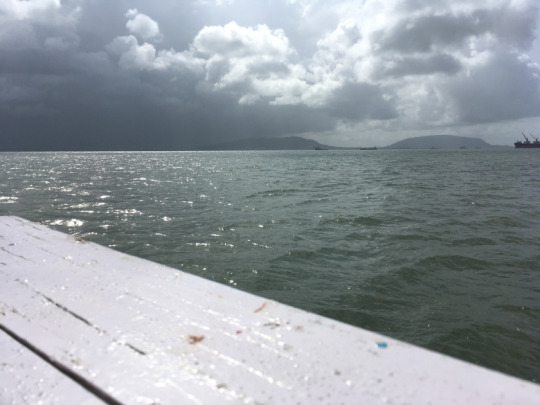
Original image of a sunny day
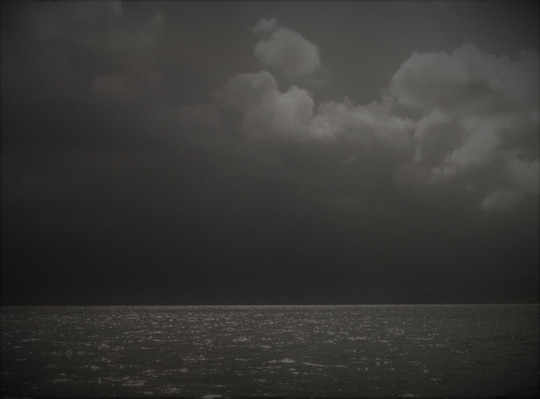
Storm alert! (Manipulated photograph)
What did I edit?
I cropped the image to show a dark horizon.
I also changed the colour tone of the image, creating a gloomy photograph as opposite of the sunny day at sea.
I reduced the colour intensity as well.
Why did I edit?
The photograph of the dark horizon creates a suspense about something to take place. The formation of the clouds add to the overall feeling of a storm.
Will it confuse the audience?
Yes, I think this photograph will confuse the audience if they are not shown the actual photograph.
Can the edited or unedited image be used as a press photograph? Why? (news media)
I think the edited image can be used as a press photograph because it shows a weather forecast in the present. Though in reality it cannot be used as a press photograph because it has been manipulated. Press photography is all about shooting the truth. It would be against the ethics of press photography to use this image.
2. Ancient painting found
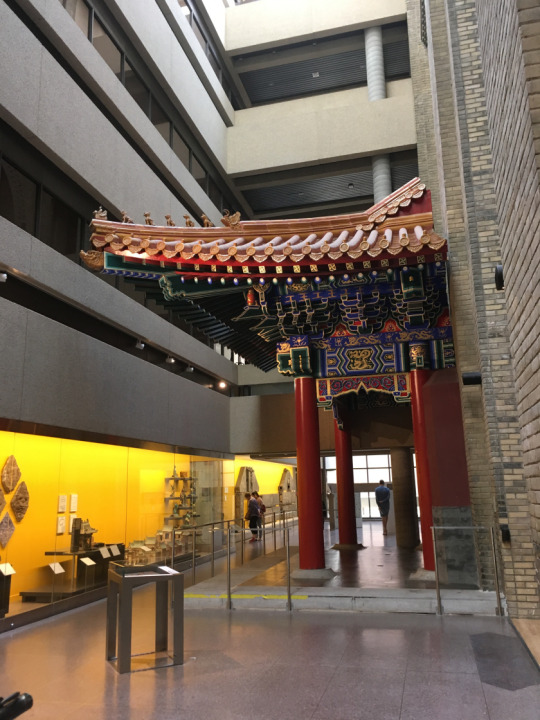
Original image of an art exhibit
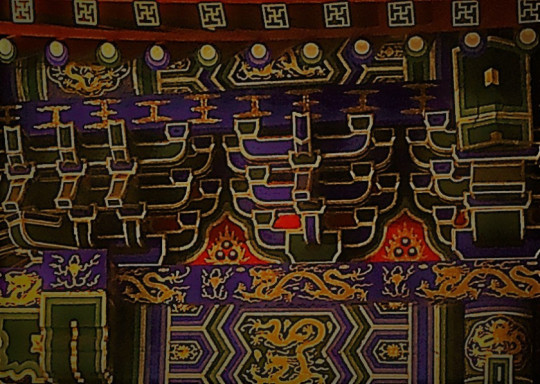
Manipulated image depicting a painting
What did I edit?
I cropped the roof of the art installation to show the intricate details that adorn the roof.
I changed the brightness, colour and tone of the image.
Why did I edit?
I edited all the above to try and form a painting with an old, rustic look.
Will it confuse the audience?
Yes, I think this photograph will confuse the audience if they are not shown the actual photograph of the art installation.
Can the edited or unedited image be used as a press photograph? Why? (news media)
I do not think that any of these images can be used as press photographs.
I think so because there is no element of surprise or awe in both the images.
3. Sketching the skyline

Original image of the skyline
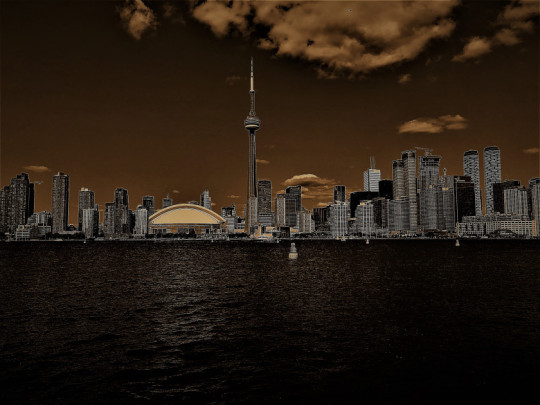
Manipulated image depicting a sketch done by someone
What did I edit?
I changed the colours, decreased the brightness, added a filter and changed the look of the image completely.
Why did I edit?
I edited it because the filter makes the buildings look like they have been sketched by someone and then added to the backdrop. Even the ripples on the water are looking very different.
Will it confuse the audience?
Yes, I think this photograph will confuse the audience if they are not shown the actual photograph. People might think about the reason behind why the colours in the edited image are so odd.
Can the edited or unedited image be used as a press photograph? Why? (news media)
No, I think the images cannot be used as press photographs. Like the earlier example, these images too do not have anything that would draw the attention of the audience.
4. Sing flipped for a day!
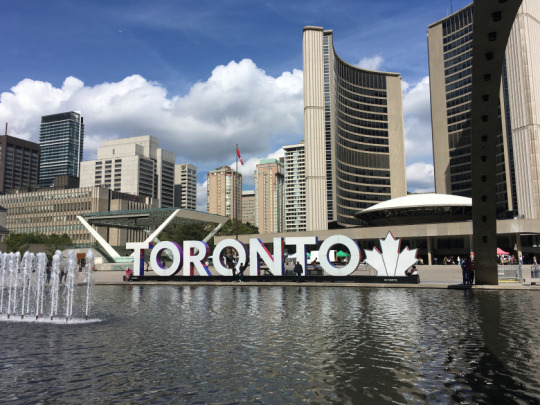
Original image
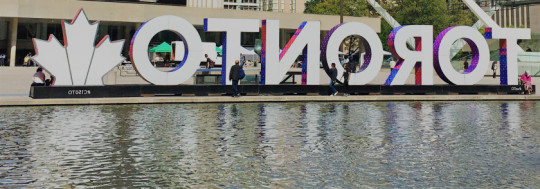
Manipulated image
What did I edit?
I flipped the image, cropped it, added some highlight and brightness.
Why did I edit?
I edited it because I think it creates an unique image.
Will it confuse the audience?
Yes, I think this photograph will confuse the audience if they are not shown the actual photograph. The edited image looks real and at the first glance it will confuse a lot of people.
Can the edited or unedited image be used as a press photograph? Why? (news media)
The edited image could be used as a press photograph because it will definitely shock everyone. But in reality it cannot be used because it is against the ethics of photojournalism. This is fake news and we have earlier read about the impact that fake news can have on the public.
5. Snowstorm freezes the city
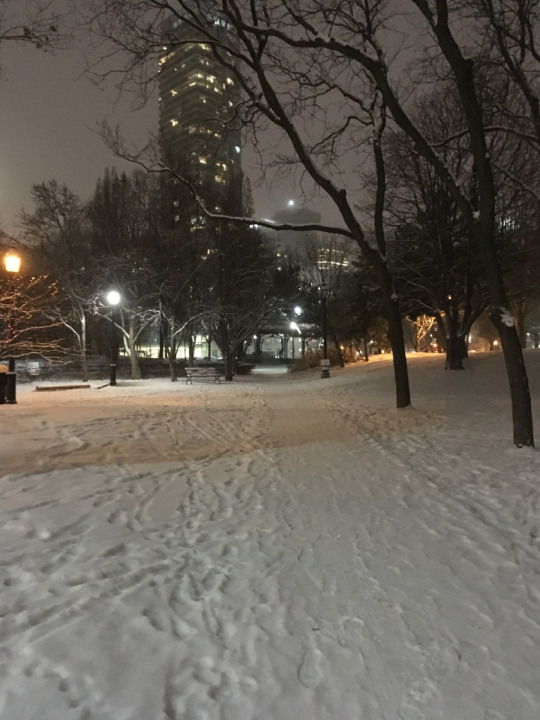
Original image
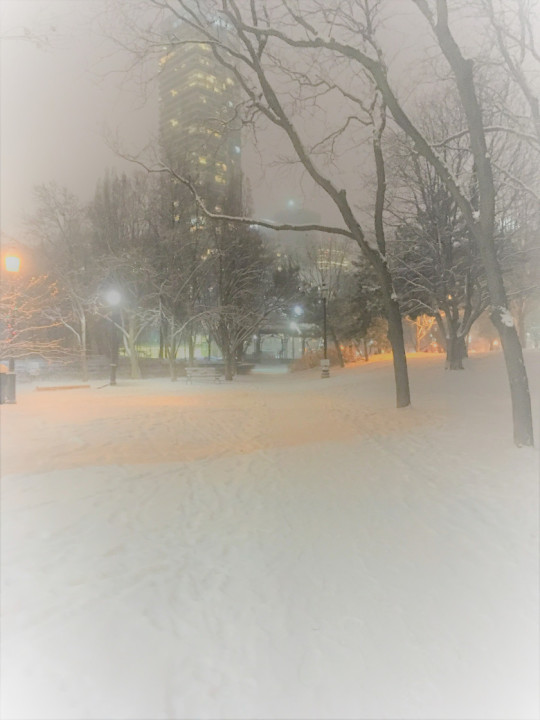
Manipulated image
What did I edit?
I just changed the brighness and increased the colour balance in this image.
Why did I edit?
I made these changes because it makes it looks like there is a lot of wind and snow in the location, whereas that is not the truth.
Will it confuse the audience?
I think this photograph will confuse the audience if they are not shown the actual photograph. But unlike the previous images, people might believe that this snowstorm took place. It does not look like it is edited.
Can the edited or unedited image be used as a press photograph? Why? (news media)
The edited picture of the snowstorm can be used in press photography. But it is against the ethics and principles of press photography and thus should not be used.
What are the main differences between art and press photography?
Art Photography
Art photography is like an abstract painting. There are no rules whatsoever. The resulting photograph is the imagination of the photographer. Art photography is not fact based. The photographer is not limited to shooting only one image because there is freedom given to the photographer. It is not like photojournalism where the space in newspapers is limited and all the facts need to be documented in one photograph. Photojournalists are bound to portray the truth, whereas art photographers can capture anything they like. Time is not a factor in art photography. The photographer can take any amount of time to create the photograph. (Visual arts cork ) Below are some examples of art photography.
(Uncapher, 2018), (Visual arts cork), (Texture X, 2013)
Press photography
Press photography’s main purpose is to record events and happenings around the world. Unlike art photography, press photography involves creating the true image of an event. Press photography also needs to be quick. The latest events need to be immediately sent for publishing. In the modern time of social media playing a more important role, press photography has become even more difficult. Everyone is on social media and for your photograph to be seen first by the public, the press photographer needs to be present where the event has occurred. The photographer has no time to spare. The perfect image showing the details of the entire event need to be out online in as less time as possible. Otherwise, the people will see some other news and photos before yours. (Press photographer, 2018)
A passerby comforts an injured woman lying on the pavement after Khalid Masood drove his car into pedestrians killing four in addition to a police officer at Westminster Bridge in London, Britain, March 22, 2017.
People are thrown into the air as a car plows into a group of protesters demonstrating against the Unite the Right rally in Charlottesville, Virginia, on Aug. 12, 2017. The attack killed Heather Heyer and injured 19 others. James Alex Fields Jr., the alleged driver, was charged with second-degree murder. The white nationalist rally was originally organized to protest the city of Charlottesville’s plans to remove a statue of Confederate Gen. Robert E. Lee.
(Stewart, 2018)
Both the branches of photography, art photography and press photography, are very unique from one another and have a lot of challenges of their own.
References
NPPA. (2017). Code of ethics. Retrieved from NPPA: https://nppa.org/code-ethics
Photography Schools. (2016, February 24). A brief history of photojournalism. Retrieved from Photography Schools: http://www.photography-schools.com/photojournalismhistory.htm
Press photographer. (2018). Retrieved from Prospects: https://www.prospects.ac.uk/job-profiles/press-photographer
Stewart, J. (2018, February 15). World Press Photo nominees 2018. Retrieved from My Modern Met: https://mymodernmet.com/world-press-photo-nominees-2018/
(2016). Doctored photos? Retrieved from TIME: http://content.time.com/time/photogallery/0,29307,1857430_1794847,00.html
Uncapher, B. R. (2018, February 12). What is fine art photography. Retrieved from Photography life: https://photographylife.com/what-is-fine-art-photography
Visual arts cork . (n.d.). Fine art photography . Retrieved from Visual arts cork : http://www.visual-arts-cork.com/fine-art-photography.htm
Visual arts cork. (n.d.). Man ray. Retrieved from Visual arts cork: http://www.visual-arts-cork.com/famous-artists/man-ray.htm
World Press Photo. (2018). What counts as manipulation . Retrieved from World Press Photo: https://www.worldpressphoto.org/activities/photo-contest/verification-process/what-counts-as-manipulation
Photo Manipulation: Photography and ethics 1. Storm at the sea What did I edit? I cropped the image to show a dark horizon.
0 notes
Text
Puran poli is an Indian flatbread stuffed with a sweet lentil paste and seared on a flat pan till cooked. There are many variations in the recipe depending on the region of India and the availability of local ingredients. The following recipe is the one I have learnt from my grandparents and that is made at home for many festivities.
Ingredient Quantity For the filling Split chickpeas 360 grams Water 840 ml Jaggery, chopped into cubes 240 grams Grain sugar 120 grams Nutmeg powder ¼ teaspoon Cardamom powder ¼ teaspoon Saffron A pinch Salt ¼ teaspoon For the dough Whole wheat flour 120 grams Refined wheat flour 120 grams Cold water 120 ml Salt ¼ teaspoon Refined vegetable oil 3 tablespoons Refined wheat flour for sprinkling on the dough 50 grams
Yield: This recipe yields 17 flatbreads. Usually consumed by 7-8 people.
Equipment: Large pot, colander, food processor, ladles, bowls, rolling pin, non-stick pan or flat top
Procedure:
Wash the split chickpeas.
In a large pot, add the washed split chickpeas and water. Start cooking on medium heat. Do not cover the pot.
While the lentils are cooking, make the dough with cold water. Cover the dough with refined vegetable oil and rest the dough for 1 hour.
After an hour, knead the dough once again. Rest till the filling is ready.
Check if the lentils are cooked. If the lentils are very soft and you can break them without any resistance, then turn off the heat.
Drain off all the water in a colander.
Transfer the lentils to a food processor. Make a fine paste.
In another pot, add the lentils, jaggery, sugar, salt and saffron. Cook for another 30 minutes stirring continuously.
Once the mixture becomes stiff and leaves the sides of the pot, remove from heat.
To make the flatbreads, take 30 grams portion of the lentil mixture and form into a round ball.
Take 20 grams of the prepared dough and make a disc of 5 inches using the rolling pin. Now keep the lentil mixture in the centre and cover with the dough from all sides forming a ball.
Sprinkle some refined wheat flour and roll this ball into a flat disc of 7 inches.
Cook the flatbread on a non-stick pan or a flat top, whichever is available.
Serve hot with milk, clarified butter or as is.
Time for some festivities Puran poli is an Indian flatbread stuffed with a sweet lentil paste and seared on a flat pan till cooked.
0 notes
Text
Is it a mud apple?
Is it a mud apple?
There are a number of seasonal fruits available in all tropical countries. I am always curious to find out the local fruits when I travel to any new place. I visit markets and look for ingredients that are not familiar to me. On one such occasion, I was in a farmers market in Mumbai and I came across a fruit that looked similar to a mud apple or sapodilla. But this one was smaller in size and…
View On WordPress
0 notes
Text
I think chocolates truly unite the world. Some countries savour it in the natural form of cocoa, while some countries turn the same ingredient into a sophisticated art form. Whatever be the case, cacao is a controversial ingredient.
In many parts of the world, chocolate has been consumed on a regular basis while in many others chocolate is a new trend. This is increasing the demand for cacao beans and the production needs to be multiplied by many folds. But the reality is that the global production of cacao beans in depleting because of climate change, the age of cacao trees, pests, land degradation, labour shortage and instability in the political climate of many developing countries where cacao is grown. (Guest, 2012)
The production of cacao beans is also depleting by the years because, although chocolate is considered a luxury product, the farmers who grow cacao get around 7% the amount that is paid for any chocolate bar. The rest 93% goes to the huge companies that manufacture and market those chocolates. A large number of farmers are moving to different crops which fetch them more money in the market. (Guest, 2012)
While organizations like Fairtrade International are working relentlessly to ensure that farmers get the right value for their cacao, the events like Mondelez International UK deciding to go their own way, raise suspicion. Mondelez International UK decided to start their own program called ‘cocoa life’ which they claim is similar to that of Fairtrade International. But people were not happy with this change. The fear is that all private companies would start following this method which will benefit them and they might hide the truth from the public. (Doherty, 2016)
This shows that the production of cacao has a number of issues on various level. The world chocolate consumption is increasing and there would be an acute shortage of cocoa by 2020 if the current production does not increase by 25% or 1 million tonnes annually. (Doherty, 2016)
I have attached pictures of chocolates from different countries that I learnt about in class. Each country faces some problem in terms of cocoa farms, chocolate production, export, import, manufacturing or distributing.
Cacao nibs
Belgium
Brazil
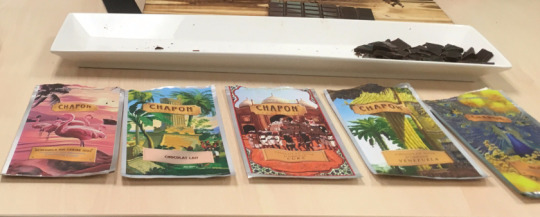
Luxury single origin chocolate bars
Chocolate truffle
Peruvian chocolates
Cote d’Ivoire
Austrian dessert from Vienna: Sacher torte
Fazer chocolates from Finland
Austrian Mozart chocolates with marzipan center
References
Doherty, B. (2016, December 05). It’s not a very merry Christmas for Fairtrade chocolate. Retrieved from The conversation: https://theconversation.com/its-not-a-very-merry-christmas-for-fairtrade-chocolate-69761
Guest, D. (2012, April 05). Bitter-sweet easter: how our demand is melting sustainable cocoa farming. Retrieved from The conversation: http://theconversation.com/bitter-sweet-easter-how-our-demand-is-melting-sustainable-cocoa-farming-6264
Chocolates from the world I think chocolates truly unite the world. Some countries savour it in the natural form of cocoa, while some countries turn the same ingredient into a sophisticated art form.
0 notes
Text
An end to food waste
An end to food waste
Feeding the 5000 had its Toronto debut at Expo for Design, Innovation and Technology (EDIT) in October 2017. George Brown College along with other chefs and organisations was a part of this event. All the ingredients used to feed people would otherwise be thrown out by the supermarkets. Please do not get confused. There is nothing bad or inedible about these ingredients. The only reason they…
View On WordPress
0 notes
Text
Modern tostadas with roasted crickets, Japanese hand rolls, Indonesian satay with peanut sauce and an imaginative funnel cake with strawberry compote and vanilla creme Chantilly.
Global comfort food Modern tostadas with roasted crickets, Japanese hand rolls, Indonesian satay with peanut sauce and an imaginative funnel cake with strawberry compote and vanilla creme Chantilly.
0 notes
Text
Photojournalism: Shooting the truth
Photojournalism: Shooting the truth
Discussion 8
– What’s the role of photojournalism?
The role of photojournalism is to convey accurate news to the public. It is a medium that connects people with the happenings of the world. People relate to the photographs more than plain text. So photojournalism helps to inform the world about the latest events in an interesting way.
– Are there rules that photojournalists should follow? Why?…
View On WordPress
0 notes
Text
Photography and society
Compare the work of Alexander Rodchenko, Peter Kennard and John Heartfield and elaborate: What are the differences and similarities?
Alexander Rodchenkowas an artist, painter and sculptor before becoming a photographer. Later he focused on graphic design and photography. His photographic work is one of the most unique of his time of photographers. He started shooting people and things from angles…
View On WordPress
0 notes